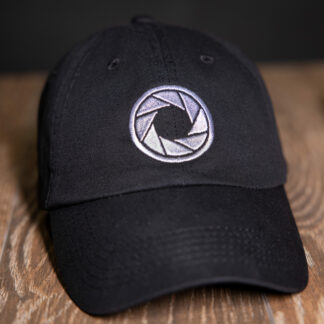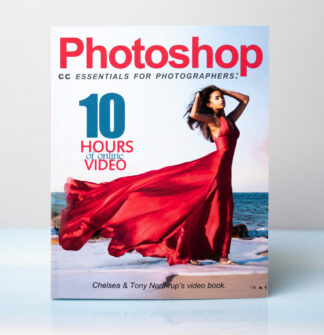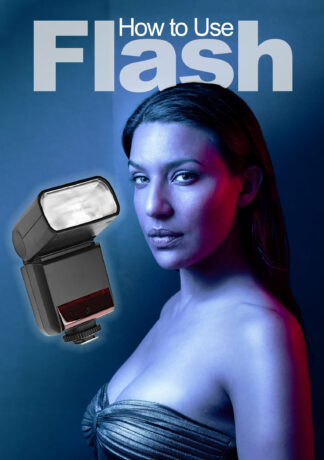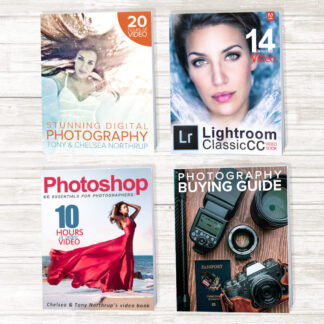There’s one camera trait you need to choose before thinking about features: lens mount. Lens mount determines the availability of accessories such as add-on lenses and flashes.
There are currently about 17 different popular lens mounts, which makes camera shopping incredibly complex. For most people, I recommend choosing one of the six most popular lens mounts: Nikon DX (APS-C DSLR), Canon EF-S (APS-C DSLR), Sony E-Mount (APS-C mirrorless), Micro four-thirds (mirrorless), Nikon FX (full-frame DSLR), or Canon EF (full-frame DSLR).
Though you’ll no doubt find horror stories about each of them, your odds of getting good prices, support, and accessories are roughly equal. Canon and Nikon are constantly playing catch-up with each other. At times, Nikon has had superior technology. Within six months, though, Canon will release a camera or lens that very slightly surpasses Nikon’s. This is free-market competition at its finest, and it works so well that you can be confident with your purchase from either brand.
With that said, some photographers might appreciate the subtle differences between brands:
- Nikon. I recommend Nikon DSLRs to anyone who is primarily focused on image quality, especially stock, commercial, fashion, and landscape photographers. Nikon DSLR cameras have about 30% better image quality than the Canon equivalent at that price point.
- Canon. I recommend Canon to beginning wildlife photographers because Canon has a slightly better selection of telephoto lenses. In particular, there’s no Nikon equivalent of the excellent 400mm f/5.6, which is very sharp mid-level birding lens at $1,300. Additionally, all Canon camera bodies can autofocus with older Canon EOS telephoto lenses, whereas older Nikon only autofocus with bodies that have a focusing motor. At the high end, Canon has recently refreshed their 500mm and 600mm lenses, and while they’re very expensive at more than $10,000, they’re a bit sharper than the Nikon equivalent.
- Sony. I recommend Sony E-mount APS-C mirrorless cameras to casual photographers and my friends who love gadgets. If you’ve always got the latest cell phone, the lightest tablet, or the newest electric car, you’ll love Sony. They’ve added cool features, like Wi-Fi, NFC, and downloadable apps. The downside to being the new kid on the block is that Sony doesn’t have as wide a variety of modern lenses, flashes, and third-party accessories as Canon and Nikon, but it does have all the gear most amateur photographers will ever need. I don’t often recommend Sony’s DSLR cameras because I believe Sony will soon abandon DSLR format and put its energy into its mirrorless cameras.
- Micro four-thirds. I recommend Micro four-thirds cameras, such as Panasonic and Olympus cameras, for potentially serious photographers who prize small size and light weight over image quality. The Micro four-thirds format is unbeatable for budget video. Lenses tend to be more expensive than their Canon and Nikon equivalents, however, especially for higher-end lenses. For example, the Olympus 35-100 f/2 ($2,500) is equivalent to a Canon or Nikon 70-200 f/4 ($1,300).
- Pentax. While not as popular as Canon and Nikon DSLRs, Pentax DSLRs offer in-body image stabilization (IBIS) and better weather sealing. If you need an inexpensive camera that can survive wet conditions, or you plan to buy prime lenses and hand-hold them (instead of using image stabilized zooms), Pentax is ideal. Pentax has some third-party support from Tamron and Sigma, but many lenses are not available for Pentax.
- Fujifilm. Fuji X-mount cameras are perfect for old school photographers who love buttons, dials, and manual settings, and who aren’t afraid to read a camera manual. If you like Leica cameras, I’d probably steer you to Fujifilm instead, because they have the same soul at less cost. Fuji’s not popular enough to get lens support from Tamron and Sigma, which is a big drawback—you’re limited to the handful of lenses Fujifilm sells. You can adapt lenses, but you’ll usually lose autofocus and aperture control.
I hesitate to recommend many other lens mounts because they have limited lens support or I’m uncertain that the manufacturer will continue making new lenses and cameras in the future. Nonetheless, I have dedicated chapters later in this book to every single major lens mount, so you can explore every manufacturer’s offerings.
Don’t take those comments too seriously; the differences don’t matter too much. There are many amazing wildlife photographers shooting with Nikon gear, Canon cameras have amazing image quality for thousands of pros, and if you have a Sony camera, you’ll probably always be able to find the accessories you need. These camera manufacturers are 99% the same. Plus, they’re constantly releasing new gear to fill in any gaps, so any advantages or disadvantages are temporary.
When you buy an interchangeable lens camera, you’ll get the best results if you use the lenses designed for that system. Therefore, it’s important to consider the body and lens variety for each system. The following table lists the most popular mirrorless systems in rough order of popularity, along with the approximate number of camera bodies and lenses designed for the system. The highlighted rows are my most commonly recommended systems.
|
System |
Current Bodies (approx.) |
Native Lenses (approx.) |
|
Nikon Full-frame DSLR |
4 |
100+ |
|
Nikon APS-C DSLR |
5 |
25 |
|
Canon Full-frame DSLR |
3 |
100+ |
|
Canon APS-C DSLR |
7 |
15 |
|
Sony APS-C Mirrorless |
15 |
20+ |
|
Sony Full-frame Mirrorless |
3 |
5 |
|
Sony APS-C DSLR |
2 |
12 |
|
Sony Full-frame DSLR |
1 |
24 |
|
Micro four-thirds Mirrorless |
25 |
50+ |
|
Pentax 645 DSLR |
1 |
17 |
|
Nikon 1 Mirrorless |
10 |
13 |
|
Canon EOS M DSLR |
3 |
3 |
|
Samsung NX |
8 |
24 |
|
Pentax K |
5 |
40 |
|
Fujifilm X/XF |
2 |
5 |
|
Pentax Q |
2 |
6 |
|
Leica M |
3 |
38 |
Note that Canon, Nikon, and Sony APS-C camera bodies can use same brand’s full-frame lenses, albeit with a drop in image quality. With a few exceptions, I generally recommend upgrading to a full-frame body before investing in full-frame lenses.
Note that I’m not listing the number of DSLR lenses that can be connected to the system using adapters; I discourage you from factoring these lenses into your decision-making process because their size defeats the purpose of using a mirrorless system in the first place, and handling and autofocus tend to be clumsy. I do understand that DSLR lens compatibility is an important factor for people with existing equipment, so if you have several Pentax K-Mount lenses that you want to use on a modern, digital, mirrorless camera, you should buy the Pentax K-01. If you want to use your Canon DSLR lenses on a mirrorless body, you should get the Canon EOS M.
Do think through this choice carefully, however, because lenses designed for mirrorless systems are much smaller and lighter, and those are the biggest reasons to get a mirrorless system in the first place. If you want to use DSLR lenses, I advise you simply to buy a DSLR. If you don’t want to lose your investment in DSLR lenses but you do want to use a mirrorless body, I advise you to sell your DSLR lenses and put the proceeds towards native lenses.





